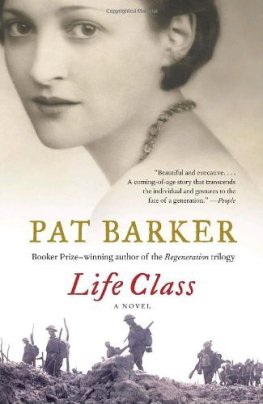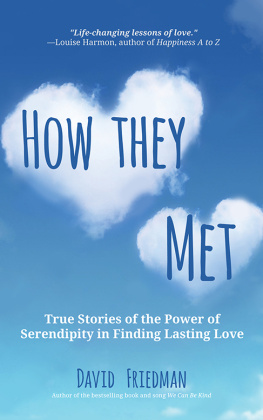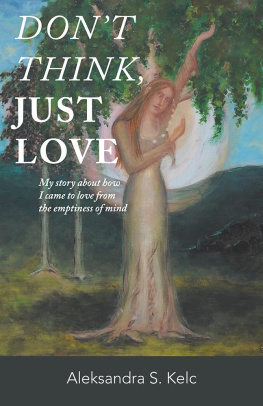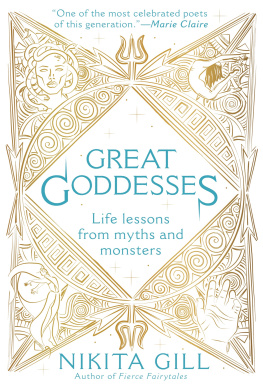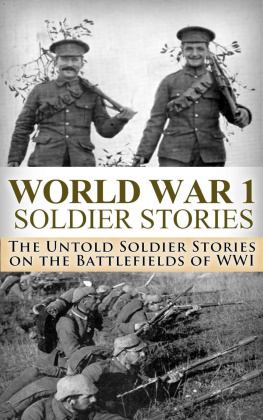WORLD WAR I
Love Stories
Real-life romances from the war that shook the world

GILL PAUL
Introduction by AdrIAn GiLbert

CONTENTS
When he found himself trapped behind enemy lines in occupied France, Robert knocked on the door of the Dessenne family
Annie was a pretty nurse who looked after Ivor in a Scottish war hospital, but she struggled to cope with his fragile mental health.
Max was already making a name as an artist when war began, forcing him to put his work, and his relationship with Luise, on hold.
Roland and Vera were due to study at Oxford together when war began; instead he wrote poetry in the trenches while she volunteered for hospital work.
Valentine was a dressmaker living with her mother in southwestern France, when one day a wounded American soldier came hobbling up the hill
Red Cross nurse Agnes flirted with all the men in her care, but Ernest, who was seven years her junior, fell seriously in love.
Fred and Evelyn grew up near each other in Ontario and were as close as two people can possibly beuntil he crossed the Atlantic to join the fighting.
Hugh was a trainee minister who enlisted on his wedding day, three months before Jessie gave birth to their baby son.
Two of the four Smythe brothers from New South Wales found brides while fighting in Europe, but one would fail to return.
As an Irishman who fought in the British Army, Joseph faced hostility on his returnbut that didnt deter Mary, his loyal correspondent.
Combat flying was perilous but the Roosevelt men were fiercely competitive and, to Floras dismay, Quentin felt he had to match his brothers achievements.
During his convalescence from a severe case of trench foot, J.R.R. began writing fantasy stories, helped by the ever-loyal Edith.
Mary was disappointed that Lloyd didnt propose before leaving Kansas, but she had no idea then how long she would have to wait to walk down the aisle.
At wars end, Jack volunteered to help bury fallen soldiers, and he met a Belgian girl, Adrienne, while dating her sister.
1914 saw the beginning of a war that would be fought around the worldthe start of four years of relentless fighting, which would lead to the deaths of 17 million men, women, and children. The global conflict would destroy families and change lives forever.
World War I Love Stories tells the unforgettable stories of lovers brought together or torn apart by the Great War. These are tales of romance and sometimes great tragedy, but most of all they are tales of enduring love at a time when the world was full of horror.
Introduction
by Adrian Gilbert

A map illustrating the global nature of the 191418 conflict, with the major European powers drawing upon the resources of their overseas empires.

A US Army machine-gun team prepares for action on the Western Front. By 1918, America was making an important contribution to the Allied war effort.
The Road to War
W hen a European war broke out in 1914, most military experts believed a resolution to the conflict would be quick and decisive. None had any idea that it would lead to more than four years of unrelenting attritional conflict and the deaths of as many as 16 million people from around the world.
The traditional rivalries among the major nations of Europe intensified in the latter part of the 19th century, fueled by the emergence of Germany as the major economic and military power on the Continent. And yet Germany felt deeply aggrieved by its inability to take a significant share in the vast colonial expansion in Africa and Asia, led by Britain and France. This frustration encouraged the German emperor, Kaiser Wilhelm II, and his government to issue threats of military action that alarmed the other European states. German policy consisted mainly of threats rather than action, but designed to antagonize other European nationssuch as supplying arms to the Boers during Britains war against the Boers.

Kaiser Wilhelm II, the autocratic and often bellicose ruler of Germany.
France, humiliated by Germany during the Franco-Prussian War (187071), formed an alliance with Russia for mutual protection against Germany. For its own part, Germany turned to Austria-Hungary to create a competing military alliance, known as the Central Powers. The alliance system was inherently dangerous, however, as an attack by one nation on another was likely to lead to a general European war. Britain had traditionally kept out of direct involvement in such treaty obligations, but Germanys decision to build a powerful fleet and challenge Britains position as the worlds leading naval power pushed Britain toward support for France and Russia.
International tensions increased further with ill-judged German interventions in Morocco, but the real impetus for war lay in the rivalry of Austria-Hungary and Russia over control of the Balkans. The collapse of the Turkish empire in the region had led to the emergence of new independent states with predominantly Slav populations. Among these was Serbia, openly antagonistic to Austria-Hungary and its control over the Slav province of Bosnia. Russia, already hostile toward Germany and Austria-Hungary, felt a sense of kinship with its fellow Slavs in Serbia.
The assassination on June 28, 1914, of Archduke Franz Ferdinand, heir to the throne of Austria-Hungary, by Gavrilo Princip, a Bosnian-Serb nationalist, led Austria-Hungary to declare war on Serbia exactly a month later. This localized decision had swift and far-reaching consequences, as Russia mobilized its army in support of Serbia. On August 1, Germany went to war against Russia, and two days later declared war on France. On August 3, German troops marched through neutral Belgium, as part of their offensive against the French. The following day, Britain, fearful of Germanys military domination of Europe, came out in support of Belgium by declaring war on Germany.
SHOTS HEARD AROUND THE WORLD
In June 1914 Archduke Franz Ferdinand, heir to the throne of Austria-Hungary, made an official visit to Bosnia, which had been incorporated into the Austro-Hungarian Empire in 1908. The Black Hand, a Serbian-supported terrorist group, planned to assassinate the Archduke as part of its campaign to take Bosnia out of Austrian control and into a union with Serbia. As Franz Ferdinand and his wife drove through the Bosnian capital of Sarajevo on June 28, they were mortally wounded by shots fired by Gavrilo Princip, a 19-year-old Bosnian-Serb nationalist. This brazen challenge to Austria-Hungarys authority in the Balkans led eventually to a declaration of war against Serbia on July 28, 1914.

The Archduke Franz Ferdinand and his wife, Sophie, prepare to make the car journey that ended in their assassination
Next page



